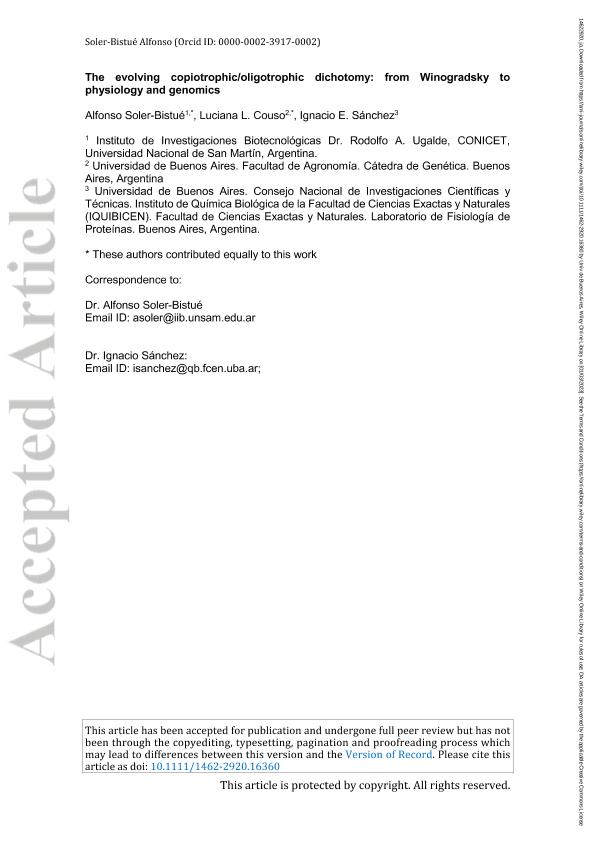Artículo
The evolving copiotrophic/oligotrophic dichotomy: From Winogradsky to physiology and genomics
Fecha de publicación:
03/2023
Editorial:
Wiley Blackwell Publishing, Inc
Revista:
Environmental Microbiology
ISSN:
1462-2912
Idioma:
Inglés
Tipo de recurso:
Artículo publicado
Clasificación temática:
Resumen
Nearly 100 years ago, Winogradsky published a classic communication in which he described two groups of microbes, zymogenic and autochthonous. When organic matter penetrates the soil, zymogenic microbes quickly multiply and degrade it, then giving way to the slow combustion of autochthonous microbes. Although the text was originally written in French, it is often cited by English-speaking authors. We undertook a complete translation of the 1924 publication, which we provide as Supporting information. Here, we introduce the translation and describe how the zymogenic/autochthonous dichotomy shaped research questions in the study of microbial diversity and physiology. We also identify in the literature three additional and closely related dichotomies, which we propose to call exclusive copiotrophs/oligotrophs, coexisting copiotrophs/oligotrophs and fast-growing/slow-growing microbes. While Winogradsky focussed on a successional view of microbial populations over time, the current discussion is focussed on the differences in the specific growth rate of microbes as a function of the concentration of a given limiting substrate. In the future, it will be relevant to keep in mind both nutrient-focussed and time-focussed microbial dichotomies and to design experiments with both isolated laboratory cultures and multi-species communities in the spirit of Winogradsky's direct method.
Archivos asociados
Licencia
Identificadores
Colecciones
Articulos (IIBIO)
Articulos de INSTITUTO DE INVESTIGACIONES BIOTECNOLOGICAS
Articulos de INSTITUTO DE INVESTIGACIONES BIOTECNOLOGICAS
Articulos(IQUIBICEN)
Articulos de INSTITUTO DE QUIMICA BIOLOGICA DE LA FACULTAD DE CS. EXACTAS Y NATURALES
Articulos de INSTITUTO DE QUIMICA BIOLOGICA DE LA FACULTAD DE CS. EXACTAS Y NATURALES
Citación
Soler Bistue, Alfonso J. C.; Couso, Luciana Laura; Sánchez Miguel, Ignacio Enrique; The evolving copiotrophic/oligotrophic dichotomy: From Winogradsky to physiology and genomics; Wiley Blackwell Publishing, Inc; Environmental Microbiology; 25; 7; 3-2023; 1232-1237
Compartir
Altmétricas




